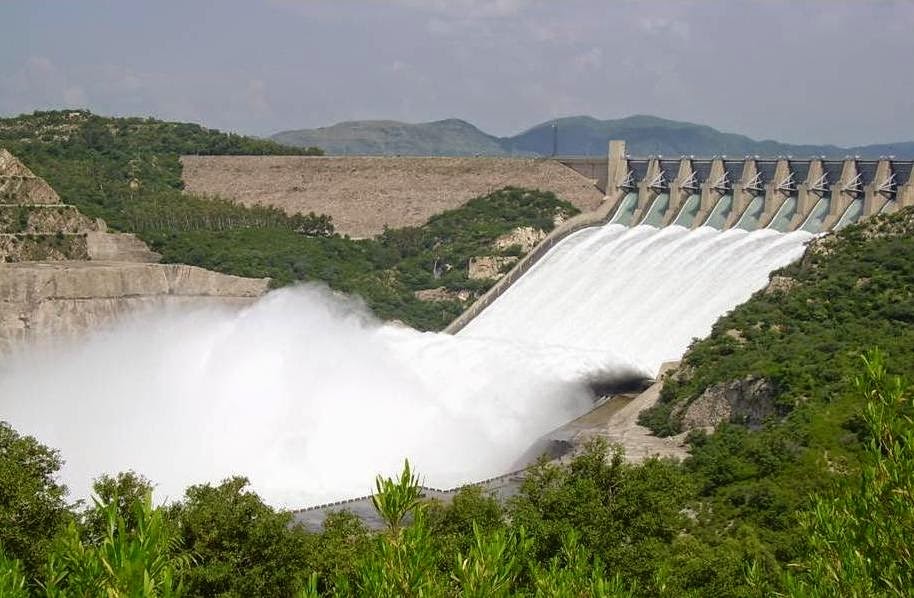Dams for progress by Arshad H. Abbasi
source = Published in Dawn January 28th, 2015
It’s easier to fool people than to convince them that they have been fooled. — Mark Twain
THE PML-N has gone to great lengths to showcase the bus rapid transit (BRT) project in Punjab. Rs30 billion was spent on the first phase in Lahore that, with a 27-kilometre long route, was completed just in time for the 2013 elections. Soon enough though, with the annual subsidy for it touching the Rs3bn mark, it has proved itself to be a white elephant.
The PML-N had made the prevailing energy crisis a key plank in its election campaign. Following its victory, a fresh list of power projects was drawn up to justify asking for more international funding.
At the same time, a special budget of Rs50bn was reserved for another BRT project in the twin cities of Rawalpindi and Islamabad. The enthusiasm for it in government corridors was evident from the outset. Work began without any due diligence regarding cost and design. Excavation work was almost complete even while the shop drawings were still in the pipeline.
Had the government evinced comparable interest in the energy sector, which is the engine of the economy, half the amount swallowed up by the metro bus project could have been used for the rehabilitation of thermal power plants. Increasing their efficiency could have resulted in twice the power being generated using the same amount of fuel.
A glance at our neighbours is instructive. In the Indian state of Gujarat, the 45km Ahmedabad BRT — completed during Narendra Modi’s tenure as chief minister — has won global awards for design and been cited for transparency. The opaque manner in which the Islamabad metro project has been executed stands in stark contrast.
Failure to build dams leaves us vulnerable to water scarcity.
Meanwhile, Pakistan’s already frail economy suffered another serious blow last year when disastrous floods in the river Chenab caused over Rs200bn of damage. More than 1,500 villages, including 350 in the vicinity of Multan, were badly affected.
One of the major reasons for the floods is the continuing delay in the construction of the Chiniot dam. This reservoir, which will have a storage capacity of 1.3 million acre feet and generate 60MW of hydroelectricity annually, was first proposed in 1959 in London by Frank Haigh, a former chief engineer in Punjab’s irrigation department.
Fifty years later, in 2009, Syed Raghib Ali Shah, a member of Wapda who later became its chairman, drew up a Rs24bn project proposal for the construction of the dam, that would bring in yearly financial gains of Rs5bn. The file, so far, has failed to capture the attention of the government.
The building of dams, including Chiniot, has been deferred at a time when Pakistan has entered an acute level of water scarcity. Per capita water availability has dwindled by over 420pc since 1951 to 990 cubic metres per person in 2014, thereby further imperilling food security.
The outlook for Pakistan’s water storage capacity is likewise bleak. Water is available for only 25 days in reserve, whereas India has the means to store water for a staggering 120 days. The contribution of Pakistan’s agricultural sector to its GDP is lower by 21.8pc for want of more water for sustained growth.
Pakistan’s population is expected to swell to over 250 million over the next 15 years, leading to increased demand for food. To bring additional land under cultivation, the water storage capacity must be enhanced. Currently, out of 197m acres, only 52m acres are cultivated due to water shortage, leaving Pakistan at elevated risk of food insecurity.
The 2012 Global Hunger Index describes the level of hunger in Pakistan as “serious”. The deaths of scores of children in Tharparkar recently illustrate the dire food insecurity that already exists in Pakistan. An estimated 80pc of households in Thar do not have enough food beyond two weeks.
Water and food security issues can only be addressed if the capacity to regulate water is increased through the development of additional reservoirs, particularly given that the capacity of the Tarbela dam will be reduced by half over the next 10 years.
We have a right to know the capital cost and cost-benefit analysis of the kind of projects that the government has undertaken. Instead, the construction of yet another BRT project, this time for Multan, has been announced. The city, with a population of 0.7m, already has a jumble of flyovers scarring its landscape, thanks to the former premier who belonged to the area.
These flawed and self-serving projects only create a false sense of hope and prosperity. Instead, for the sake of this country’s future, and with an eye to energy, water storage, food security and flood mitigation, the government should undertake the construction of dams without any further ado.
The writer is an adviser to the Sustainable Development Policy Institute.




Comments
Post a Comment